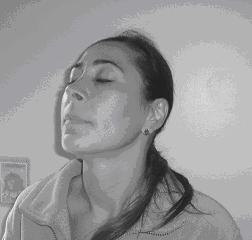Cervical Kinaesthesia...a Must to Address!
- Following an acute ankle injury (e.g. an inversion sprain), it is common sense that ankle proprioception is reduced and that Physical Therapy management must include balance and proprioceptive retraining.
- Following ankle injuries, patients are frequently put on wobble boards, uneven surfaces with eyes open or closed etc… in order to retrain proprioception. It is well known that if ankle proprioception is not addressed, recovery may be delayed and the risk of recurrence of another ankle injury may increase.Does it not make sense to evaluate and ‘treat’ kinaesthesia / proprioception following cervical injuries (e.g. following an MVA)?
Is proprioception of the neck not as important as proprioception of the ankle?
- One simple method of evaluating cervical kinaesthesia in a patient with a whiplash associated disorder is by asking the patient:1) Find the neutral position for your head is sitting
2) Now close your eyes and VERY slowly turn to the left or right (as far as you can comfortably go)
3) Keep the eyes closed and return to the ‘neutral’ position again
4) Once you believe you have reached ‘neutral’, open the eyes
The Physical Therapist notes for two things:
1) A subtle ‘cog wheeling’ effect during the exercise… instead of a smooth motion
2) Inaccuracy at finding the ‘neutral’ again…either over or under-shooting
Treatment options:
1) The same exercise as above! Repeat 5 times and perform 3-4 times per day.
2) Close the eyes and SLOWLY draw a figure 8 with the nose.
Note: By closing the eyes, greater dependence is placed on the mechanoreceptors in the cervical spine soft-tissues. This exercise will inevitably improve an individual?s awareness of where their head is in space
…which is pretty important!
Posted on: June 22, 2009Categories: Cervical Spine


